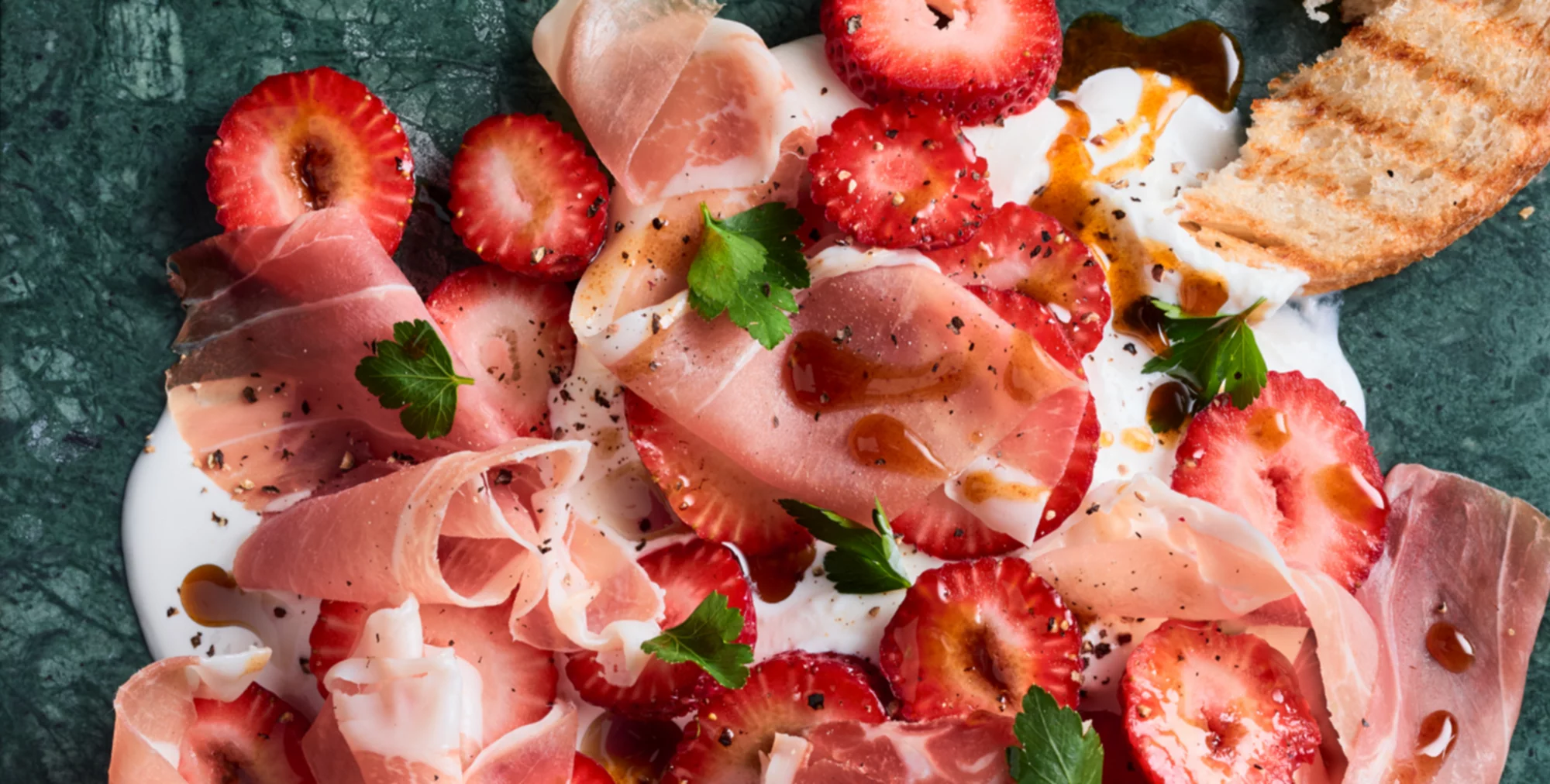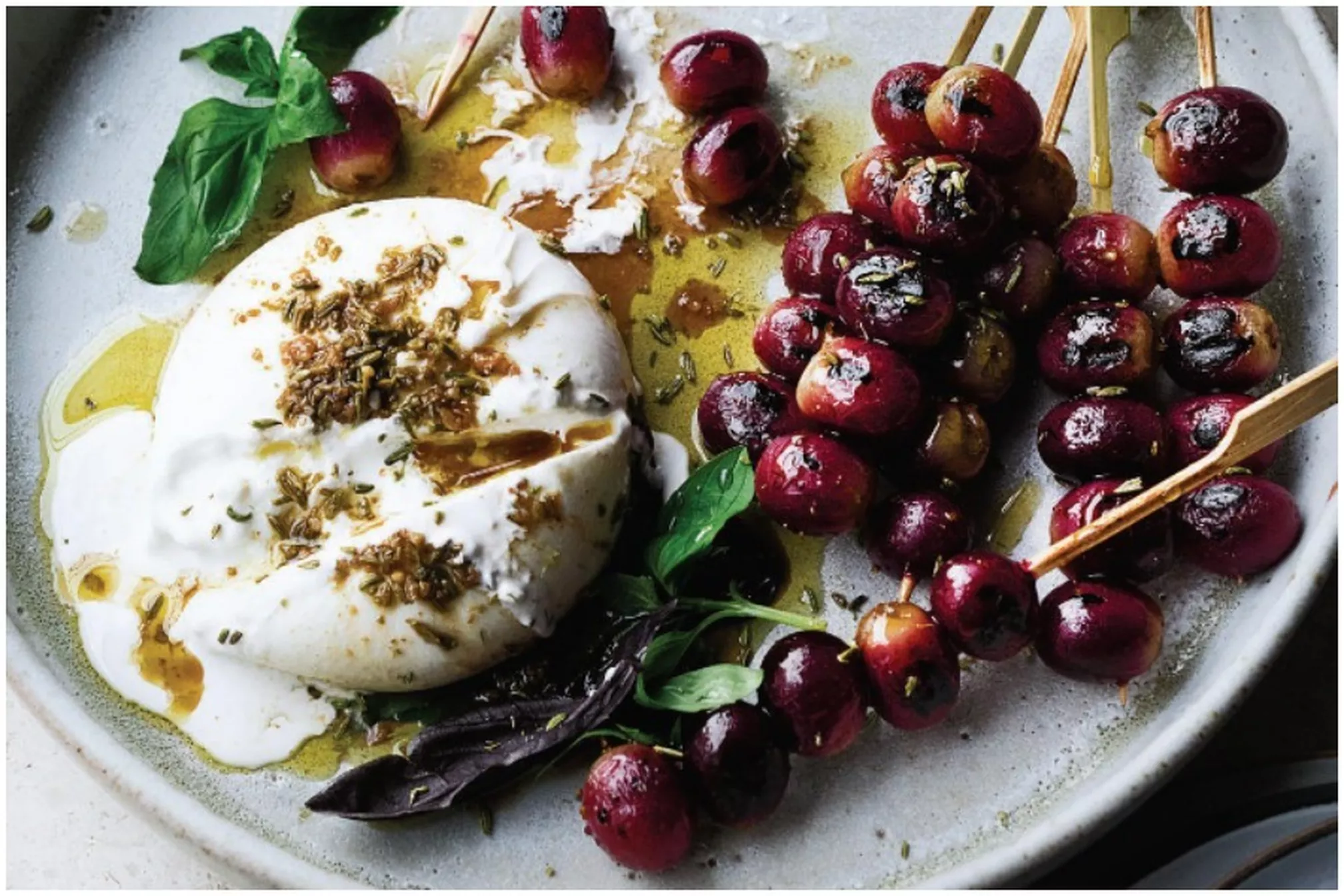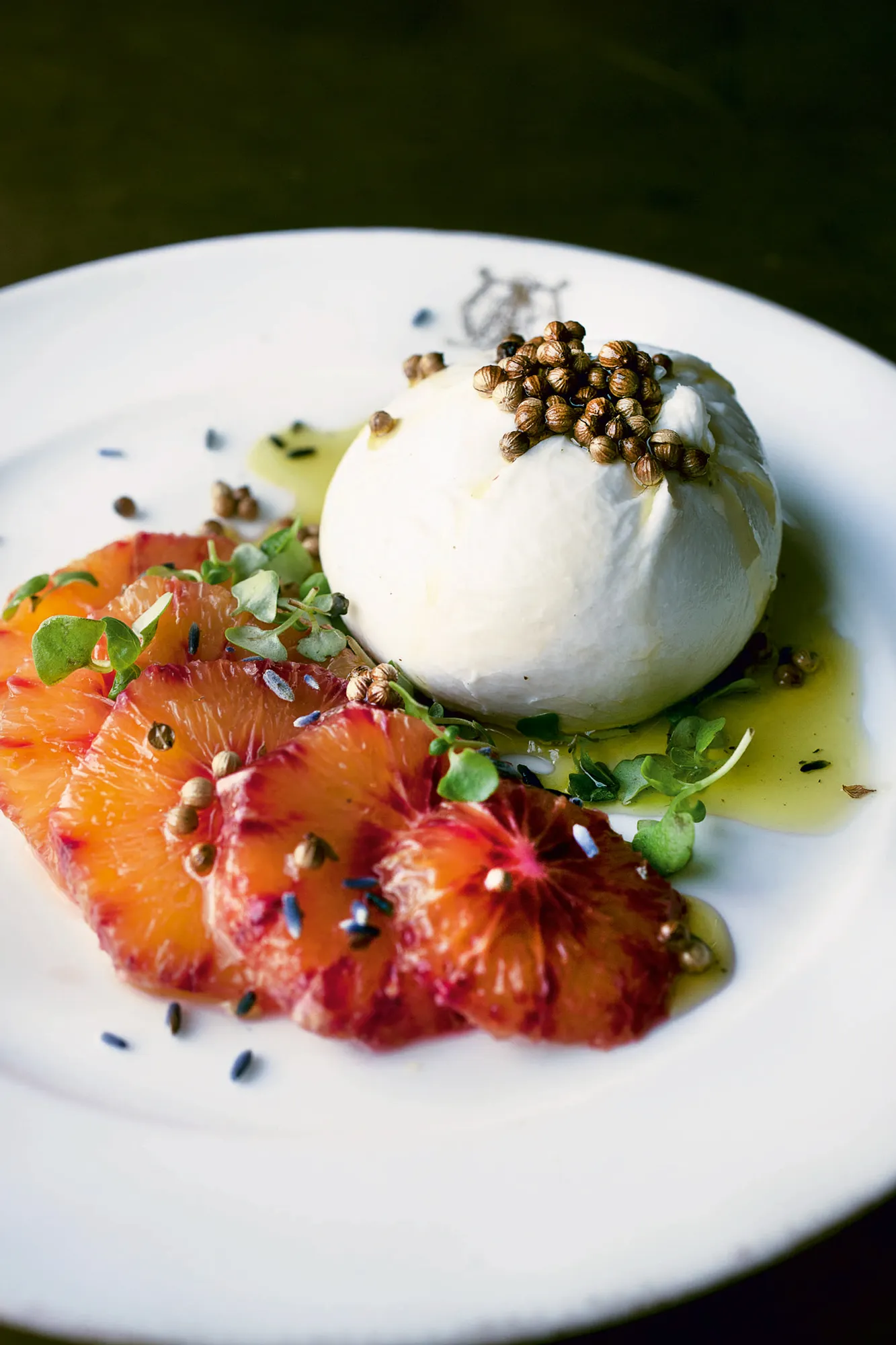Burrata - beauty or taste?
- rosemary
- Dec 2, 2023
- 6 min read
“You can use burrata for everything, but it doesn’t need anything. You only have to open it and eat,” Felice Sgarra - Michelin star chef

I can't really better the description of burrata below, so am reproducing it in its entirety:
"The first time you see a burrata sitting on a plate, tilted, you might be perplexed. Burrata is as white as mozzarella but comes with a strange narrowing at the top, like a giant dumpling. With a knife and fork, you poke the pouch, knowing something hides below that initial cheese layer. With a firm stroke, you cut the sachet in two, and the filling made of cream and mozzarella strips spills out and spreads across the plate. You roll the mozzarella strips with your fork like spaghetti, and with cream dripping, you have the first bite: an explosion of milk mixed with sweet cream and mozzarella." Agostino Petroni/BBC Travel
It comes from a longish article on the BBC's Travel website called Burrata: the surprising origin of Italy's creamy cheese which is worth a look if you are interested in the history and provenance of foodie things. I will summarise, however.
Origins - I don't know whether you would have guessed at whether this was an old or new thing. It may only have become hugely popular since - well general opinion says the 80s but I would have thought later - but nevertheless it could be really old couldn't it? There are countless old things that have become new on the foodie scene, thanks to either globalisation or an interest in looking at what people ate way, way back. Well burrata was invented in Puglia in the 1920s. A local cheesemaker in the town of Andria, Lorenzo Bianchino Chieppa, is most often credited with its invention, but apparently other local cheesemakers have disputed this. It's still made in Andria which has been awarded an IGP rating for its Burrata di Andria which obviously doesn't prevent others using the term Burrata - there are several Australian cheesemaking companies who produce a burrata for example.
And you would need to produce it locally because it doesn't keep. They used to wrap it in leaves to keep if for long enough to get to the nearby towns on the back of a cart. Today it can be air-freighted of course, but that adds to the expense. Unlike mozzarella it is also not made from buffalo milk but from cow's milk:

"burrata was born as a way of making use of leftovers from the cheesemaking process. The cream came from the dense layer formed on top of the morning milking. At the same time, the cheesemonger would make the stretched curd mozzarella and have some left over. Those mozzarella pieces were stripped with fingers, mixed inside the cream and used as filling for the burrata. ... Back then, the pouch was made by blowing inside the mozzarella. The cheesemonger blew with energy on a piece of warm and malleable fresh mozzarella to make an inflatable balloon – a technique long abandoned for air compressors for the sake of food safety." Riccardo Campanile/BBC Travel
How did it become so popular? Well the Italian diaspora initially I guess. Although it was a slow burn and probably only known amongst the immigrant Italian community. But sooner or later, high end restaurants found it. They love it because it looks so gorgeous - so white against whatever else you have on the plate. And all you have to do is plonk it on the plate with something colourful and drizzle something over the top.
‘Burrata is one of those things that is so popular because it’s incredibly simple, but it’s luxurious. It’s not that much more expensive than any other cheese," Sophie Wyburd/Time Out
I suppose it depends on where you stand on the wealth scale as to whether it's expensive or not. But you can certainly buy it in Coles (Woolworths too), where the online website describes it as "one of the most magnificent cheeses you will ever come across" . La Casa del Formaggio burrata will cost you $6.50 for a 150g version, which is not cheap, but it's also not ridiculously expensive if you want to make an impression. Now I'm sure there are indeed much more expensive 'artisan' versions about, but local is best - because of its short shelf life.

In recent times, however, its popularity has been heightened by the likes of Instagram and TikTok because of the exhibitionist moment of cutting into it and all that filling oozing out. It's a texture thing:
"Textures are probably the most important quality of food when you’re doing food photography or food video." Sophie Wyburd/Time Out
Like this TikTok Airfryer burrata bomb, which is fundamentally a piece of pastry enclosing your burrata to which has been added some basil leaves and pesto - it takes a few seconds to watch. You can find the actual recipe on Taste, but really if you watch the mini, mini video you don't really need a recipe.
Mostly you don't cook your burrata, but you do need to serve it at room temperature - so remove from your fridge half and hour or so before using it.

Also for that visually 'wow' moment there is Sylvia Colloca bursting a ball of burrata on to a dish of pasta. It doesn't matter what pasta - anything will do. Burst it, tear it a bit and spread it over the top of your colourful pasta. A more spectacular alternative than Parmesan I guess.
So what does it taste like? Well someone said 'buttery' and indeed that's what burrata means. Realistically though it's relatively bland, which can be an advantage:
‘Burrata is obviously quite a bland thing in itself, but that lends itself really well to being a canvas to serve with other things which are much more flavoursome.’" Sophie Wyburd/Time Out
The whole impetus for this post on a wintry, wet but summer's day is the complete opposite of yesterday's picture of warming soup. It was a picture of two summery burrata plates in the December Woolworths Fresh Ideas Magazine: Burrata, prosciutto and balsamic strawberry platter and Rockmelon and burrata salad. So I dreamt of being warm again.
Both incredibly simple and very eye-catching. The first one was accredited to a Woolworth member of staff - they had a small section featuring dishes from their staff. As I mentioned a while back Woolworths seems to focus on their staff, while Coles focuses on their customers. Equally PR friendly but in different ways. From 'ordinary' people anyway. There are also two different approaches to the burrata here as well - for the strawberries and prosciutto the burrata has been split and spread over the platter before piling the strawberries and prosciutto on top and for the rockmelon salad the burrata has been left whole.

There are heaps and heaps of recipes out there, mostly, although probably delicious, not particularly innovative. Even Nigel Slater who has quite a few just tends to plonk a ball of it on top of all manner of things. The burrata being just a finishing touch. So I tried to find slightly more interesting things. Mind you, that said, perhaps this Burrata with roasted cherry tomatoes from a website called Heartbeet and just one example of the most common combination out there, is possibly the best way to use it.
But I persevered, and of course Ottolenghi came up trumps with three options - the first of which Burrata with grilled grapes and basil (found on the Food 52 website) has achieved some fame. Then there is Burrata with Blood Orange, Coriander Seeds and Lavender Oil which is a partnership with his Nopi chef Ramael Scully and finally Burrata with grilled radicchio, muscat grapes and honey verjus which somebody photographed in one of his other restaurants but for which there is no recipe online.
SBS was also a really good source - here are three of their offerings: Coffee pappardelle with burrata, olives and anchovy - Luca Ciano/SBS; Pickled fennel jam with burrata and grilled bread - Jacqui Challinor/SBS and finally Shredded sugarloaf cabbage with burrata and spiced butter - Matt Wilkinson/SBS
They say summer is here, and doubtless when it eventually does arrive we shall be wishing for its end, but when it does come and if you want to make a splash buy a burrata, put it on a platter lined with something beautiful and slice into it in a spectacular fashion at your next open air lunch party. You'll be a star. You don't have to be Sylvia Colloca. Anyone can do this. Which may of course be the ultimate reason for the success of the burrata.
















Comments